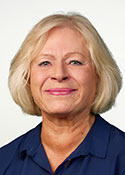This standard specifies requirements that enable an organization to design, develop and provide products, goods and services so that they can be accessed, understood and used by the widest range of users, including persons with disabilities.
The standard promotes accessibility following a Design for All approach in mainstream products, goods and services and interoperability of these with assistive technologies.
This standard specifies requirements and recommendations that enable an organization to extend their range of users by identifying diverse needs, characteristics, capabilities, and preferences. This is done by directly or indirectly involving users, and by using knowledge about accessibility in its procedures and processes. This can enable an organization to meet applicable statutory and regulatory requirements as related to the accessibility of its products, goods and services.
The requirements set out in this standard are generic and are intended to be applicable to all organizations, regardless of type, size, or products, goods and services provided.
This document does not provide technical design specifications and does not imply uniformity in the design or functionality of products, goods and services.
Buy the standard

